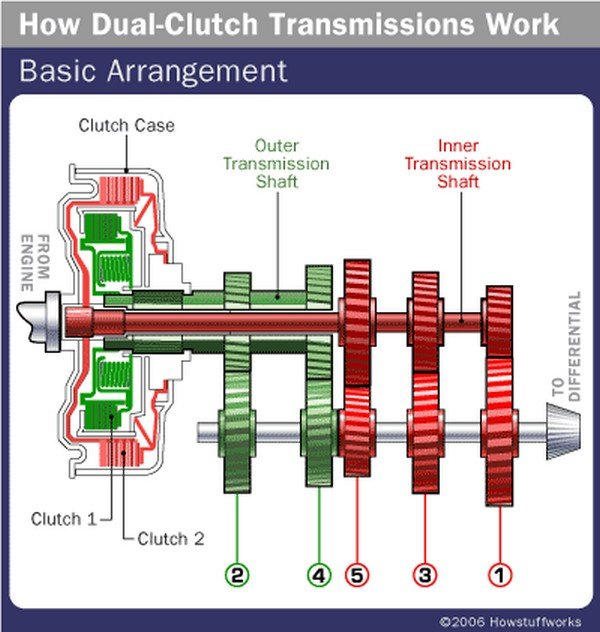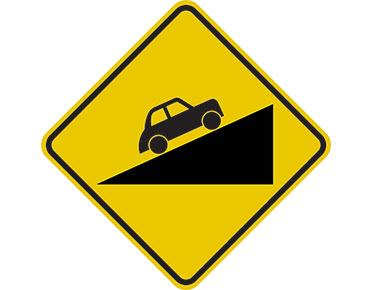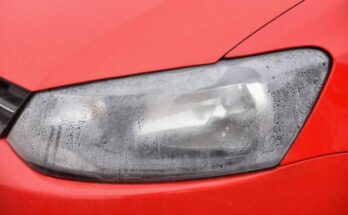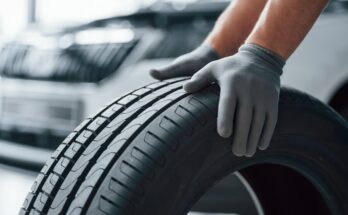Pakistani automobile market witnessed a lot of new options lately thanks to the Auto Policy 2016-21 which attracted various new players to set up their plants & introduce new products here. And with new options came new technologies as well.
For long, we have been accustomed to manual, conventional torque converter automatics or CVT (continuously variable transmission) but with the introduction of new players, we are now embracing cars with DCT (dual-clutch transmission) which is being offered with the likes of Changan Alsvin & Proton X70, etc. However, there are certain things that need to be kept in mind when you are driving a car with a DCT gearbox. If you are not aware of how DCT works, you might end up damaging the transmission of your vehicle due to incorrect driving practices. But don’t worry; you just have to keep below mentioned things in mind which will eventually benefit you in properly using a car with a DCT gearbox, so read on.
How Dual Clutch Transmission Works?
First, you should know how a DCT gearbox works. Basically, it has two operating shafts, one for the odd gears and the other for even gears, and there are two separate clutches for each shaft, hence dual-clutch. When the first gear is engaged, the second gear on the other shaft is selected and is ready to be engaged. As the vehicle gains speed and the second gear is needed, the clutch is immediately engaged. The same happens during downshifts. Although the basic principle of this transmission is to simply shift gears, but since the mechanism of doing this job is different, there are certain things you need to keep in mind.
Beware on the Inclines
If you drive a vehicle that has a dual-clutch transmission, learning to handle inclines & slopes effectively is one of the biggest obstacles to overcome. When you are driving a conventional automatic vehicle, the spinning of the torque converter will hold the car in place, preventing it from rolling. However, in the case of dual-clutch transmission, the clutch itself attempts to hold the vehicle in place. So the force needed to maintain the position of your vehicle will put even more stress on the clutch– it will eventually heat up and start slipping. Over the course of time, this behavior will cause serious damage to the clutch.
Related: Paddle Shifters- How It All Started?
Using your brakes at each incline will work well in protecting your vehicle. When you use brakes, the clutch is automatically disengaged. By taking the pressure off the clutch, you will reduce the amount of heat, wear, and stress that is applied to the transmission.
No Downshift in Acceleration & Upshift During Braking
The DCT gearbox has several entries to measure which gear to engage. The throttle position, brake position, and speed are the main factors with which it determine when to shift the gears. When you are speeding up by pressing the accelerator pedal, the dual-clutch transmission will pre-select a higher gear. If you are engaging the brake and slowing down, the transmission will pre-select a lower gear.
Suppose when you approach a red signal and the light turns green before you have enough time to stop. To maintain the flow of traffic, you will need to accelerate, but it might take some time before the vehicle shifts into gear because both of your clutches might be disengaged if you slow down enough.
Related: Automatic vs Manual vs CVT: Different Transmission Types Explained
If you apply the brake before shifting up, you will experience a delay in shifting. This delay is a result of the vehicle pre-selecting a lower gear based on the usage of the brake. Since the correct gear was not pre-selected, it will take some time for the vehicle to select the correct gear. When doing so, the engine and transmission run at slightly different speeds which results in a little slip between the clutch and the flywheel shortening its life span.
Improper launching
Launching a car fast is a thrill on its own. To do so, people often hold the accelerator and brake pedals at the same time for too long. By doing so, the heat and tension generated will transfer to the clutch and cause damage. Some performance vehicles have systems in place (launch control) to prevent damage from launching your vehicle the wrong way. As the speed of the engine increases, the vehicle will disengage the transmission if you are not moving forward. However, in a normal passenger car with DCT that is not equipped with the launch control system, you will certainly not want to take the risk.
Act Wisely in Start/ Stop Traffic
Traffic jams are always frustrating but thanks to automatic transmissions you don’t have to feel the pain of engaging and disengaging the clutch manually. DCT does provide you that sort of comfort but you still need to be aware that slowly inching forward in a dual-clutch vehicle is not a good idea. By having your foot on the brake and slowly creeping forward, your first-gear clutch is not fully engaged, which means there is more wear on the transmission.
Although the clutch is designed to handle such driving behavior, pros suggest that avoiding this type of driving as much as possible will prolong the longevity of the DCT gearbox. For better results, you will want to wait for a larger gap in traffic before you take your foot off the brake to move forward. Only moving when you have sufficient room will allow your vehicle to switch to first gear, lessening the stress on the engine.
Switching to Neutral, Not So Necessary
When coming to a stop, drivers will often put a dual-clutch car in neutral because they think it protects the transmission. However in DCT, when you apply a certain amount of pressure to the brakes, and the car slows down enough, both clutches will disengage automatically, which means the car will be in neutral even though you did not shift to neutral. As the clutches are designed to disengage on their own while you slow down enough, leaving your vehicle in the drive will not be harmful.
Related: How to Increase the Longevity of Automatic Transmission in Your Vehicle
If you opt to switch gears because you think that you are preventing your vehicle from incurring damage or saving fuel, you are not really doing much. The transmission already took care of the issue without the need to shift gears. Also, some people tend to bring the car to neutral when going downhill in order to save fuel, as the car restricts fuel flow to the engine. However, putting the gear lever on D (Drive) mode is more sensible as you will have more control of the vehicle.
Working of Dual Clutch Transmission
Dual-clutch transmission vehicles are indeed a pleasure to drive as the shifting is smoother and provides better fuel efficiency compared to conventional torque converter automatics. However, with incorrect driving techniques, there will be more clutch wear resulting in high maintenance costs. Before buying a car with DCT, knowing how to avoid bad driving habits will considerably increase the longevity of your transmission and your vehicle.

A computer animation professional with over 23 years of industry experience having served in leading organizations, TV channels & production facilities in Pakistan. An avid car enthusiast and petrolhead with an affection to deliver quality content to help shape opinions. Formerly written for PakWheels as well as major publications including Dawn. Founder of CarSpiritPK.com








